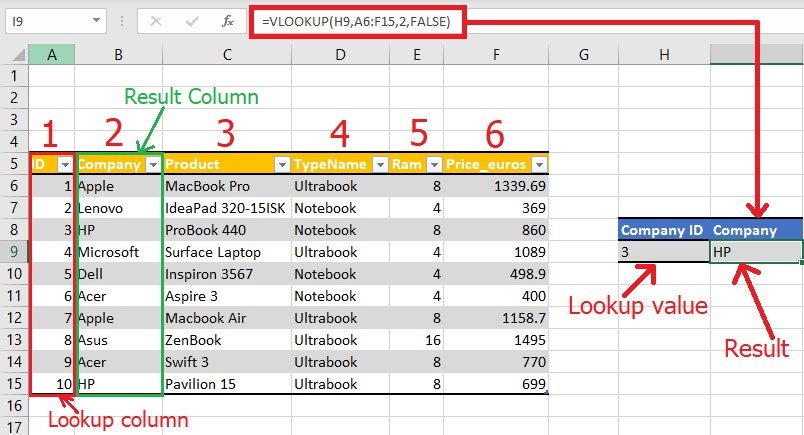Effortlessly Convert Excel to Table: Simple Steps Explained

Whether you're a seasoned data analyst or just getting started with spreadsheets, converting your data from Excel to HTML tables can greatly enhance your online presentations, reports, and publications. This process simplifies sharing complex datasets over the web, ensuring that even those without Excel software can view and understand the data. In this detailed guide, we'll walk you through the steps to convert your Excel spreadsheets into neatly formatted HTML tables effortlessly.
Why Convert Excel to HTML?

Before diving into the steps, let's explore why converting Excel spreadsheets to HTML tables is beneficial:
- Improved Accessibility: HTML tables are accessible to all browsers, allowing more people to view your data.
- SEO Benefits: Properly formatted tables can improve your search engine rankings when they contain rich, structured data.
- Embedding: You can embed tables directly into web pages or emails without worrying about file compatibility issues.
Step-by-Step Guide to Convert Excel to HTML Table

1. Prepare Your Excel Spreadsheet

The first step in converting an Excel file to an HTML table is to ensure your spreadsheet is well-organized:
- Ensure data is structured logically. Use separate rows for headers, and organize your data in columns.
- Check for and remove any empty rows or columns that might interfere with the conversion.
- Label your columns with clear headers to provide context when converted to HTML.
2. Using Excel’s Built-in Feature

Microsoft Excel has a built-in feature that allows you to convert your spreadsheet to HTML:
- Open your Excel file.
- Select the range of cells you wish to convert.
- Go to ‘File’ > ‘Save As’, and choose ‘Web Page’ from the ‘Save as type’ dropdown menu.
- Name your file, choose the location, and click ‘Save’.
This method will automatically generate an HTML file along with any necessary CSS for styling.
💡 Note: The resulting HTML will include your entire workbook unless you’ve selected a specific range of cells.
3. Using Online Conversion Tools

If you prefer a web-based solution, there are numerous online tools available:
- Find a reputable online Excel to HTML converter.
- Upload your Excel file or copy and paste your data into the conversion tool.
- Select any additional options like adding a CSS style or adjusting the table layout.
- Download the generated HTML file.
These tools can be especially useful if you’re dealing with large datasets or need to convert multiple sheets quickly.
4. Manually Converting Excel to HTML

For those who want complete control over the HTML output, manual conversion is an option:
- Open your Excel file and copy the desired range of data.
- Use a text editor like Notepad or VS Code to write HTML manually.
- Structure the HTML with
,for rows,,, andfor better structure and accessibility.This comprehensive guide should now give you the tools and knowledge to convert your Excel spreadsheets into HTML tables seamlessly. Whether you choose Excel's built-in tools, online converters, or manual methods, remember that presentation and accessibility are key. By following these steps, you're ensuring your data remains usable, understandable, and presentable across various platforms and devices.
Why convert an Excel file to HTML?

+Converting an Excel file to HTML enhances accessibility, allows for better web integration, and improves SEO when sharing or publishing data online.
Can I style my HTML table after converting it from Excel?

+Yes, you can add CSS styling to your HTML table to improve its visual appeal and layout.
Is manual conversion necessary for complex Excel files?

+Manual conversion gives you full control over the HTML output, which is particularly useful for complex files where automation might not yield the desired results.
for headers, and for data cells. Here is an example of how your HTML might look:
Header 1 Header 2 Header 3 Cell A Cell B Cell C 5. CSS Styling

To make your HTML table more visually appealing, you can add CSS styling:
- Include an inline style within the
6. Testing Your Conversion

After conversion, it’s important to test your HTML table:
- Open the HTML file in different web browsers to ensure compatibility.
- Check for responsiveness on various devices, especially if you’re embedding the table into a website.
Notes on Best Practices

When converting from Excel to HTML, consider these tips for an optimal result:
- Data Integrity: Double-check that all data has transferred correctly during conversion.
- Cleanliness: Ensure your HTML output is clean and devoid of unnecessary code or elements.
- Semantic HTML: Use proper HTML5 tags like

- Include an inline style within the



